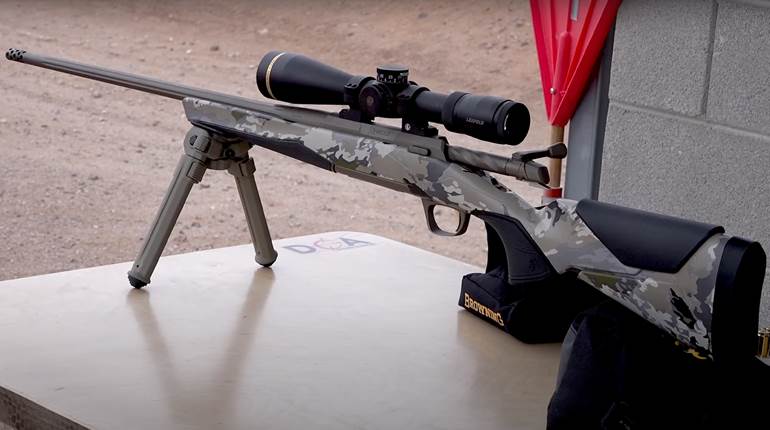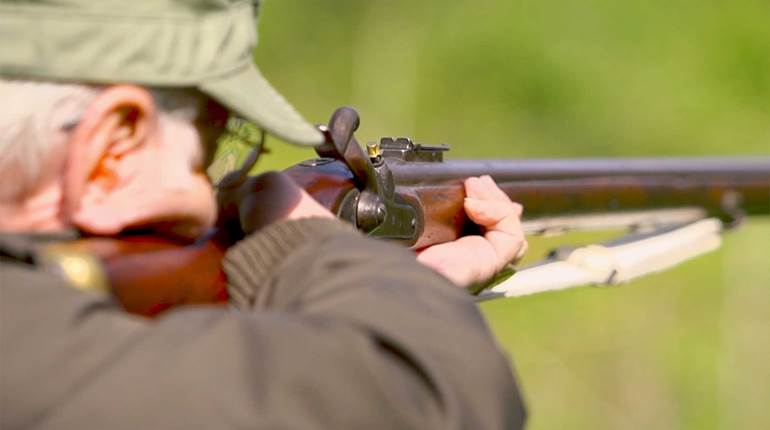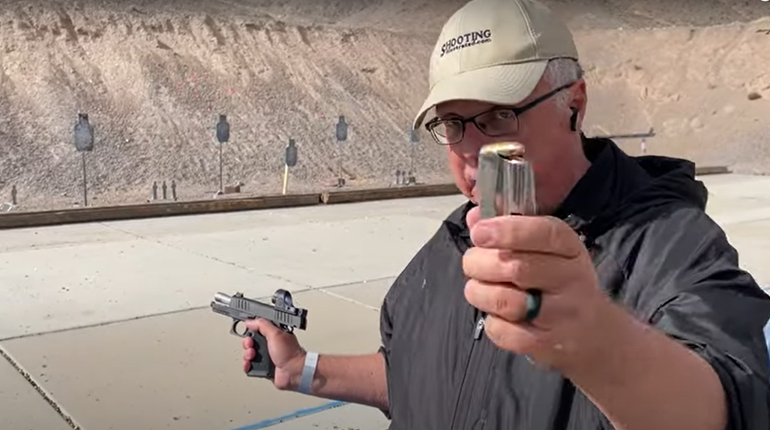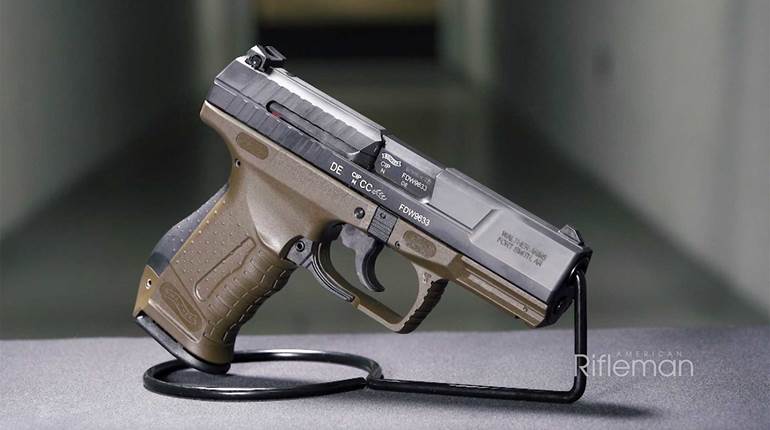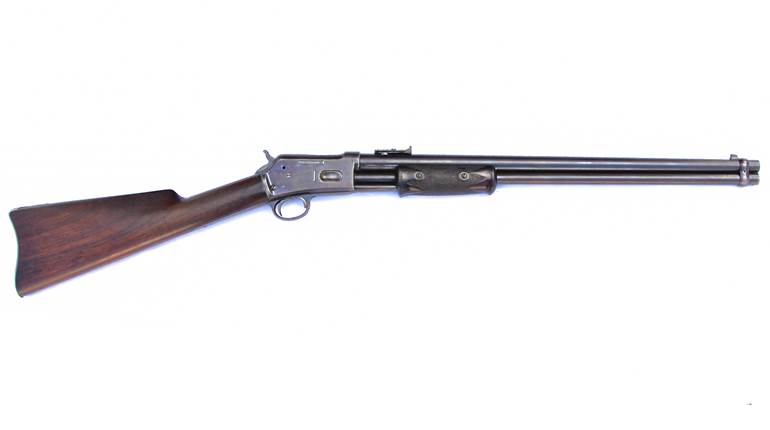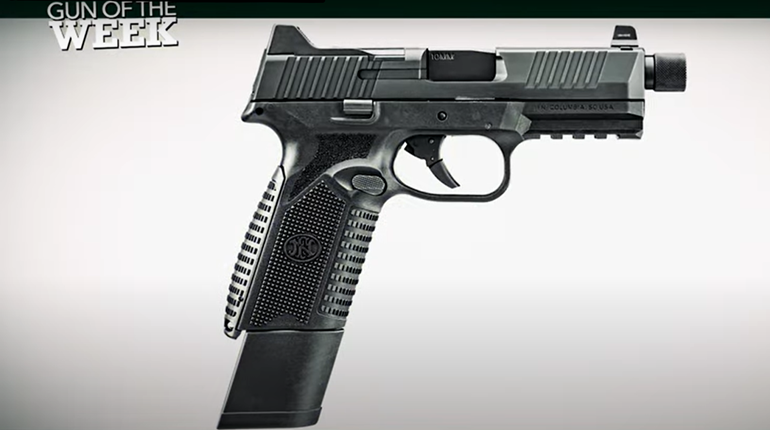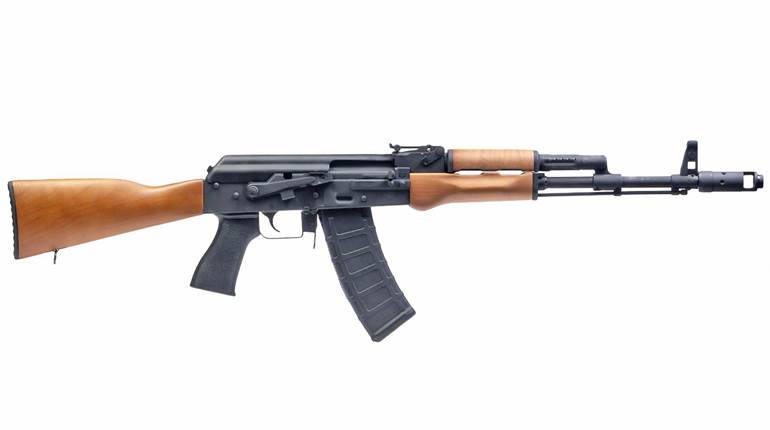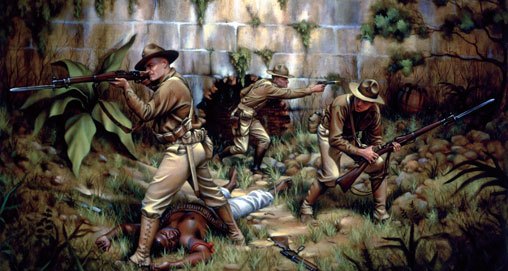
“Smedley Butler at Fort Reviere, Haiti” by Col. Donna J. Neary; courtesy of the National Museum of the Marine Corps.
In the gathering gloom, and with its flat cars and boxcars filled with khaki-clad Marines, a narrow-gauge train rolled slowly to a halt in the Nicaraguan town of Masaya. Suddenly, more than 100 mounted Nicaraguan rebels rode up and down alongside the train in the dark, firing into the cars. The Marines’ commanding officer, Maj. Smedley D. Butler, fired his Colt revolver back at the rebels, and ordered his detachment of Marines to open fire. A thunderous fusillade of small arms fire burst from the surrounding windows and rooftops, as the engine picked up speed. Butler later described the scene in his autobiography, Old Gimlet Eye.
“A sheet of fire was spitting into the darkness on both sides of the road. Four hundred Marine rifles were popping with tongues of flame, and the sixteen machine guns were rattling out a staccato beat, the engines were screaming and puffing—all in one narrow little street, while the natives shot back at us from both sides of the street.”
This small action took place in 1912, during a “peace-keeping” mission that would later be known as the First Nicaraguan Campaign. Indeed, there would be many more such actions involving Marines in Central America and the Caribbean during a period that is now known as the “Banana Wars.” These small wars were fought for a number of reasons during the American ascendancy in the region between the Spanish-American War and 1934 when President Franklin D. Roosevelt withdrew the last Marines from Haiti. Some were pacification campaigns in support of American foreign policy, others were intended to protect the new Panama Canal, a few were directed at preventing the spread of German influence into the region, but most were launched to “protect American interests and citizens.” Since most of the “American interests and citizens” in the region were involved in the expanding tropical fruit industry, especially bananas, the name “Banana Wars” seemed to sum up the Marine Corps’ experience. The Marine Corps’ involvement in the region was interrupted by service in France during World War I, so the Banana Wars really can be viewed in terms of the early (1903-1917) and late (1919-1934) campaigns.
The small arms used by the Marine Corps in the early Banana Wars include the M1905 and M1909 Colt revolvers, the M1903 Springfield rifle, the M1909 Benet-Mercie “machine rifle,” and the Colt M1895 “potato digger” machine gun. The M1911 pistol was also introduced and used to great effect in that period, and it and the “’03” rifle carried on as the principal arms used by Marines in the later Banana Wars, although the automatic weapons being used changed radically after World War I.
In 1905, two years after the first of the Banana Wars campaigns in Panama, the Marine Corps adopted its first completely USMC-specific firearm, a Colt revolver, to replace the Navy arms carried by Marine officers up to that year. Like its Army and Navy counterparts, it was chambered in .38 Long Colt, but it had a smaller grip profile than the 1902 military Colt revolvers and it sported checkered walnut stocks. Four years later, the Marine Corps followed suit with the Army and Navy in adopting a military variation of the popular Colt “New Service” revolver, chambered in an improved version of the .45 Colt—at that time the most powerful handgun cartridge available.
Experience in the earlier Philippine Insurrection and the Moro Uprising had taught the U.S. military establishment that the .38s stopping power was insufficient against a determined enemy. The Army and Navy revolvers were identical to the civilian version, with the exception of having a lanyard ring and markings on the butt, as Colt had refused to make any modifications to its standard handgun under the Army contract. However, Colt conceded to the Marine Corps’ insistence on a significant change for its revolvers.
The grip, again, was noticeably smaller than that of the civilian New Service revolvers and the M1909 Army and Navy models, and the walnut stocks had a rudimentary style of checkering. Both the M1905 and the M1909 had “USMC” and a serial number stamped into the butt, near the lanyard ring. Unlike the Army model, the number on the Marine Corps version was different from the actual factory serial number, which was found inside the crane housing. While the Army ordered more than 19,000 revolvers between 1908 and 1911, the Marine Corps purchased only about 1,300 guns. As was the case with all of the services, the Marine Corps abandoned the M1909 revolver in favor of the M1911 pistol, when the Corps adopted it in 1912. This semi-automatic pistol would play a major role in all of the subsequent Banana Wars, while many of the obsolete revolvers would find their way into the Haitian Gendarmerie, although the actual printed regulations of the Gendarmerie and its successor, the Garde d’Haiti, specified only .38-cal. revolvers.
The legendary M1903 Springfield rifle, affectionately known to Marines as the “’03,” would become one of the most revered battle rifles in history. Adopted by the Marine Corps in 1908, it supplanted the Krag-Jorgensen rifle, which had, in turn, replaced the revolutionary, but fragile, M1895 straight-pull Winchester-Lee in 1900. The rifle carried by Marines throughout the Banana Wars was in nearly all respects identical to those issued to the Army and the Navy, except that the Marine Corps designed and implemented an enlarged peep aperture on the rear sight, and a wider front sight blade. The Marine Corps also issued a larger front sight hood than the one supplied to the Army.
When this rifle was first issued to Marines, the Marine Corps was not known, as it is today, for its marksmanship ability. In fact, the Marine Corps’ record in winning shooting competitions was rather dismal in the years prior to 1912. However, with the encouragement of Commandant George F. Elliot and other notable shooters, such as Charles H. Laucheimer, Douglas C. McDougal, and future Commandant Thomas A. Holcomb, the Marine Corps very soon reached an enviable position in competition shooting, which it has maintained to the present day. If one individual can be singled out for this success, it is Col. William A. Harllee. A tough, no-nonsense and outspoken Marine, Harllee not only significantly improved the Marine Corps’ marksmanship program, but also encouraged civilian marksmanship and set the standard for Army marksmanship programs during World War I. Moreover, Harllee had been on the battlefield when accurate rifle fire really made the difference. As a sergeant in the Texas National Guard, he had successfully employed his Krag rifle during the Philippine Insurrection. While the Marine Corps did not have the opportunity to demonstrate its deadly long-range rifle shooting ability in the Banana Wars, as it had just prior to its advance into Belleau Wood during World War I, it is obvious from the after-action reports of these jungle fights that the insurgents nearly always suffered far more losses from Marine rifle fire than they were ever able to inflict on Marines. Engagements during the Banana Wars were most often short-range ambushes along footpaths and trails in a lush and forbidding tropical jungle.
The 16 machine guns described by Butler were Benet-Mercies and Colts, and were mounted on the flat cars and on the roofs of the boxcars forming the train rolling through Masaya. The Marine Corps had recently adopted the M1909 Benet-Mercie light machine gun or, as it was then known, “machine rifle.” Developed by the Hotchkiss Co. in France, it was named for an American firearm designer, Laurence Vincent Benet (son of the noted U.S. Army Chief of Ordnance in the post-Civil War period and uncle of the celebrated poet of the same name, Stephen Vincent Benet) and the French head of experimental design at the Hotchkiss Company, Henri Mercie. The light machine gun was in use by cavalry units in France (in 8 mm Lebel) and Britain (in .303 British), and by the U.S. Army. Chambered in the standard American .30-cal. rifle cartridge, the clip-fed and shoulder-fired machine gun was supported in the front by a spindly bipod and in the rear by a butt-mounted, screw-threaded monopod.
The Benet gun played a significant role in the capture of two old, decaying, French-built forts—Dipitie and Riviere—in the 1915 Haitian campaign. The Benet guns were used to deliver a constant suppressing fire against Haitian Cacos, or bandits, who had ambushed a patrol of around 30 Marines near Dipitie, and were later used against those Cacos who had holed-up in Fort Riviere. One of the Corps’ most capable chroniclers, Col. Robert D. Heinl, described the fight near Fort Dipitie in a 1978 Leatherneck magazine article:
“After dark, while the patrol was negotiating a mountain stream, a blast of rifle fire ripped out from the bush. Some 400 Cacos from Ft. Capois and nearby Ft. Dipitie, three miles east, had closed in. All night, the Marines were surrounded and under steady fire. Worse still, the bourrique (burro) carrying the one machine gun had been killed while fording the stream. To retrieve the weapon, Gunnery Sergeant Daniel Daly made his way through the Caco lines, located the dead animal, cut loose gun and ammunition and struggled back with them to the perimeter. For this feat, Daly received his second Medal of Honor. When day broke, rather than let the Cacos close the trap, Butler attacked with everything he had. The Cacos broke and ran.”
In describing the riverside ambush, Lt. (later Gen.) Adolf B. Miller noted in his diary that: “I had commanded the rearguard with the machine gun. When we opened up on them with the Benet, they sure were surprised.” Miller, one of the Corps’ earliest machine gun officers and author of the first Marine Corps manual for the Colt “potato digger” machine gun, went on to immortalize the Benet-Mercie machine rifle in yet another variation of the familiar song of the American Civil War, “Tramp, Tramp, Tramp, the Boys Are Marching.” (This tune is also well-known as “Jesus Loves the Little Children,” and a version, “Damn, Damn, Damn the Insurrectos,” that was sung during the Philippine Insurrection, includes the phrase, “And beneath the starry flag, we’ll civilize ’em with a Krag”.) When Miller penned the lines, “And beneath the broiling sun, let ’em have the Benet Gun,” in his own parody, entitled “Damn, Damn, Damn the Haitian Cacos” and recorded on the first page of his diary, he was simply continuing a musical tradition. When Butler successfully attacked Fort Riviere a few weeks later, he had two Benet guns under the command of Lt. John Marston, and according to an account by another participant, Lt. Thomas E. Thrasher, those two guns kept the Caco bandits on the fort’s ramparts fully occupied, while the rest of the detachment surrounded and assaulted the old French fort.
The next year, in July 1916, less than four months after the New York Times had announced that the Army and Marine Corps were already in the process of abandoning the Benet-Mercie in favor of an American-made version of the British Vickers machine gun, Cpl. Joseph Glowin was blazing away at rebels in the Dominican Republic with his Benet at the battle of Guayacanas. Trying to force their way through a stoutly held rebel strongpoint, the Marines brought up several light machine rifles. Glowin was wounded twice, but stayed at his gun, earning the Medal of Honor. As noted in the New York Times article, the Benet gun was notorious for jamming, and Glowin’s gun jammed, as did the others being put into action. When rebel fire wiped out the crews of the light guns while they were trying to clear the jams, 1st/Sgt. (later Brigadier General) Roswell Winans brought up a Colt gun on its wheeled carriage and opened fire. After a while, it, too, jammed and Winans was awarded the Medal of Honor for standing in full view of the enemy while clearing the jam. With two more Colts brought in the fray, the suppressing fire was enough to enable the Marines to take the rebel position at the point of the bayonet.
The Navy had adopted the Colt “potato digger” machine gun (so called for the pumping action of its gas lever under the barrel) in 1895, and had loaned four guns to the Marine Regiment that landed at Guantanamo during the Spanish-American War. Chambered in .276 or 6 mm Lee Navy, the machine gun served the sea services well during the Spanish-American War (reportedly turning the tide of battle at Cuzco Wells), in the Philippine Insurrection and in the Boxer Rebellion. With the standardization of rifles throughout the services, starting in 1900, those machine guns in the hands of the Navy and Marine Corps were re-chambered to .30 Army (.30-40 Krag), and later some were even converted to fire .30-’06 Sprg. ammunition. The machine guns in the Marine Corps’ inventory (and those sometimes manned on shore by Navy “blue jackets”) were taken ashore both on tripods and on wooden wheeled mounts, depending on the requirements of the particular campaign, as contemporaneous accounts refer to both types of mounts being used in several early actions of the Banana Wars.
However, in the end, it was not the guns in the hands of the Marines, but the dedication and resolve of the men in khaki behind them that made the difference. As is still true today, when the Marines of the Banana Wars were facing incredible odds, tense situations, and deplorable conditions, they still maintained control over the situation, prompting war correspondent Richard Harding Davis’ famous quote, “The Marines have landed, and the situation is well in hand.”
The author thanks the staff of the Marine Corps History Division, the National Museum of the Marine Corps, and the Marine Corps Archives for their wholehearted and enthusiastic assistance in the preparation of this article.
Additional Reading:
Guns of the Banana Wars, Part Two













